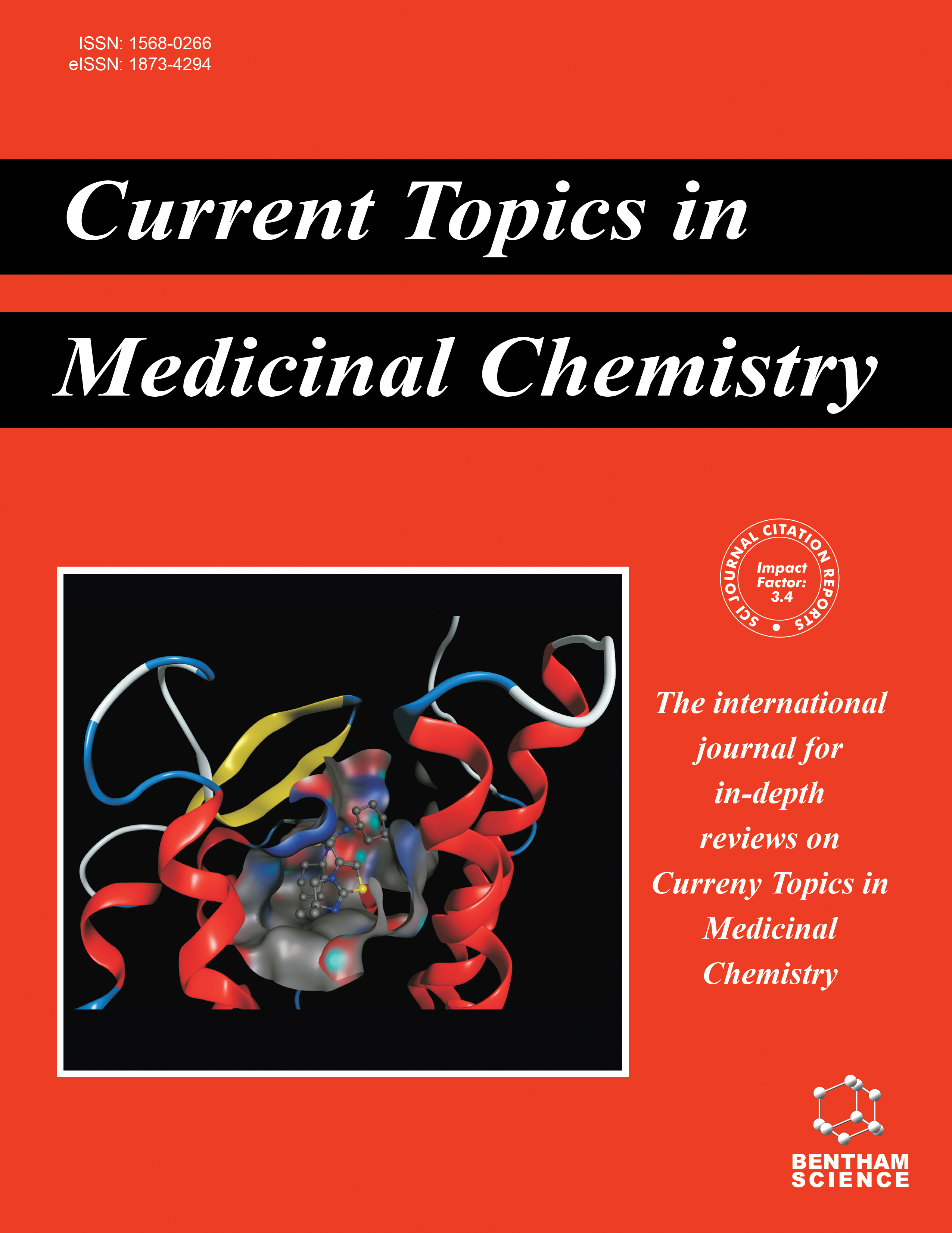- Home
- A-Z Publications
- Current Topics in Medicinal Chemistry
- Previous Issues
- Volume 11, Issue 24, 2011
Current Topics in Medicinal Chemistry - Volume 11, Issue 24, 2011
Volume 11, Issue 24, 2011
-
-
Editorial [Hot Topic: Lipophilic and Amphiphilic Interactions in Glycoprotein 41:Targets for Therapy (Guest Editor: Miriam Gochin)]
More LessThe fusion-inducing conformational switch in the extracellular domain of HIV-1 transmembrane protein gp41 began to be elucidated in 1993, through the discovery of highly potent antiviral activity of C-peptides derived from the extracellular domain. In the subsequently determined three dimensional structure, an N-terminal coiled coil core (NHR) anchors three antiparallel C-terminal heptad repeat (CHR) helices in a six-hel Read More
-
-
-
Targeting HIV-1 gp41-induced Fusion and Pathogenesis for Anti-viral Therapy
More LessAuthors: Himanshu Garg, Mathias Viard, Amy Jacobs and Robert BlumenthalHIV gp41 is a metastable protein whose native conformation is maintained in the form of a heterodimer with gp120. The non-covalently associated gp41/gp120 complex forms a trimer on the virus surface. As gp120 engages with HIV's receptor, CD4, and coreceptor, CXCR4 or CCR5, gp41 undergoes several conformational changes resulting in fusion between the viral and cellular membranes. Several lipophilic and amphiph Read More
-
-
-
Biochemistry and Biophysics of HIV-1 gp41 - Membrane Interactions and Implications for HIV-1 Envelope Protein Mediated Viral-Cell Fusion and Fusion Inhibitor Design
More LessAuthors: Lifeng Cai, Miriam Gochin and Keliang LiuHuman immunodeficiency virus type 1 (HIV-1), the pathogen of acquired immunodeficiency syndrome (AIDS), causes ∼2 millions death every year and still defies an effective vaccine. HIV-1 infects host cells through envelope protein - mediated virus-cell fusion. The transmembrane subunit of envelope protein, gp41, is the molecular machinery which facilitates fusion. Its ectodomain contains several distinguishing functional do Read More
-
-
-
Membrane-Transferring Regions of gp41 as Targets for HIV-1 Fusion Inhibition and Viral Neutralization
More LessAuthors: Nerea Huarte, Maier Lorizate, Enrique Perez-Paya and Jose L. NievaThe fusogenic function of HIV-1 gp41 transmembrane Env subunit relies on two different kinds of structural elements: i) a collapsible ectodomain structure (the hairpin or six-helix bundle) that opens and closes, and ii) two membrane- transferring regions (MTRs), the fusion peptide (FP) and the membrane-proximal external region (MPER), which ensure coupling of hairpin closure to apposition and fusion of cell and viral membran Read More
-
-
-
Targeting HIV-1 gp41 in Close Proximity to the Membrane Using Antibody and Other Molecules
More LessAuthors: Johannes S. Gach, Daniel P. Leaman and Michael B. ZwickHIV-1 envelope glycoprotein (Env) spikes are supported at the viral membrane interface by a highly conserved and hydrophobic region of gp41, designated the membrane-proximal external region (MPER). The MPER is mandatory for infection of host cells by HIV-1, and is the target of some of the most broadly neutralizing antibodies described to date. As such, the MPER is also of considerable interest for HIV vaccine design. Read More
-
-
-
Amphipathic Properties of HIV-1 gp41 Fusion Inhibitors
More LessAuthors: Miriam Gochin and Guangyan ZhouSmall molecule inhibition of HIV fusion has been an elusive goal, despite years of effort by both pharmaceutical and academic laboratories. In this review, we will discuss the amphipathic properties of both peptide and small molecule inhibitors of gp41-mediated fusion. Many of the peptides and small molecules that have been developed target a large hydrophobic pocket situated within the grooves of the coiled coil, a potential h Read More
-
Volumes & issues
-
Volume 25 (2025)
-
Volume 24 (2024)
-
Volume 23 (2023)
-
Volume 22 (2022)
-
Volume 21 (2021)
-
Volume 20 (2020)
-
Volume 19 (2019)
-
Volume 18 (2018)
-
Volume 17 (2017)
-
Volume 16 (2016)
-
Volume 15 (2015)
-
Volume 14 (2014)
-
Volume 13 (2013)
-
Volume 12 (2012)
-
Volume 11 (2011)
-
Volume 10 (2010)
-
Volume 9 (2009)
-
Volume 8 (2008)
-
Volume 7 (2007)
-
Volume 6 (2006)
-
Volume 5 (2005)
-
Volume 4 (2004)
-
Volume 3 (2003)
-
Volume 2 (2002)
-
Volume 1 (2001)
Most Read This Month
Article
content/journals/ctmc
Journal
10
5
false
en


